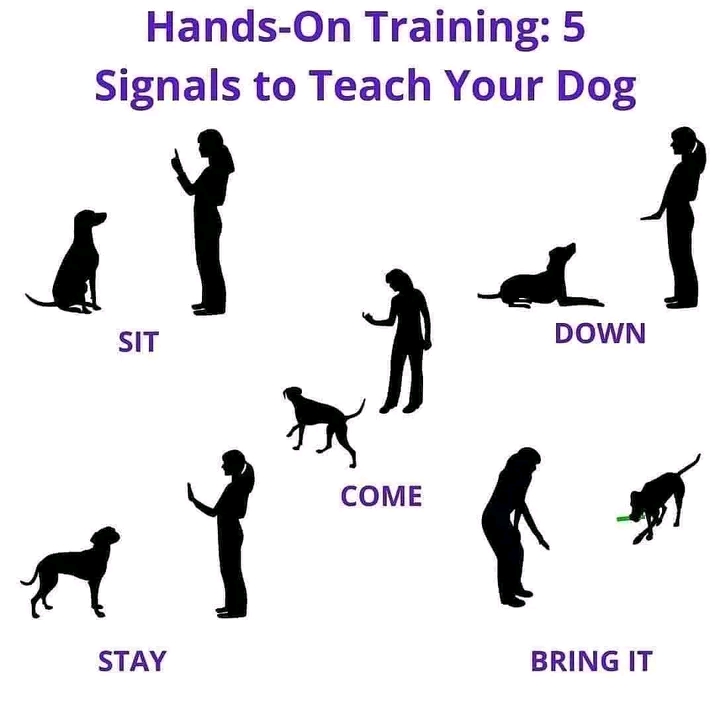PET TRAINING TIPS AND TRICKS
Pet training is an essential aspect of responsible pet ownership, ensuring a harmonious relationship between you and your furry friend. Here are comprehensive tips and tricks for effective pet training:
Start Early: Begin training as soon as you bring your pet home, whether it’s a puppy, kitten, or adult animal. Early training establishes good habits and prevents unwanted behaviors from developing.
Use Positive Reinforcement: Reward your pet with treats, praise, or playtime when they exhibit desired behaviors. Positive reinforcement strengthens the connection between the behavior and the reward, making it more likely to be repeated.
Be Consistent: Consistency is key in pet training. Use the same commands and rewards each time, and ensure that all family members are on the same page to avoid confusion.
Keep Training Sessions Short: Pets have short attention spans, especially young ones. Keep training sessions brief (5-10 minutes for puppies and kittens) and repeat them several times a day.

Use Clicker Training: Clicker training can be very effective for teaching new behaviors. The clicker marks the exact moment your pet does something right, followed by a reward.
Socialize Your Pet: Expose your pet to different people, animals, and environments early on to prevent fear and aggression. Socialization is crucial for well-rounded behavior.
Use Commands Consistently: Choose simple, clear commands for basic behaviors like sit, stay, come, down, and heel. Use these commands consistently in your training sessions.
Manage Undesirable Behaviors: Instead of punishing bad behavior, redirect your pet’s focus to a more appropriate activity. For example, if your dog starts chewing furniture, offer a chew toy instead.
Understand Body Language: Learn to read your pet’s body language to anticipate their needs and feelings. This helps in avoiding stressful situations and understanding when your pet is ready to learn.
PET TRAINING TIPS AND TRICKS
Practice Patience: Training takes time and patience. Stay calm and avoid getting frustrated if progress is slow. Every pet learns at its own pace.
Use Treats Wisely: Treats are a great motivator but can lead to obesity if overused. Use small, healthy treats and gradually reduce their frequency as your pet learns the behavior.
End on a Positive Note: Always end training sessions on a positive note, even if progress is slow. This keeps your pet engaged and eager for the next session.
Address Specific Behavioral Issues: If your pet exhibits specific problem behaviors (like excessive barking, digging, or aggression), seek guidance from a professional trainer or behaviorist.
Stay Calm and Assertive: Your demeanor affects your pet’s behavior. Stay calm, assertive, and confident during training sessions to establish yourself as the leader.
PET TRAINING TIPS AND TRICKS
Be Patient with Puppies AND Kittens: Young animals are like children; they need time to learn and will make mistakes. Provide gentle guidance and plenty of encouragement.
PET TRAINING TIPS AND TRICKS
Establish Routine: Pets thrive on routine. Establish a consistent schedule for feeding, bathroom breaks, playtime, and training sessions. Predictability helps them feel secure and aids in training.
Use a Crate or Confinement Area: Crate training can be valuable for housebreaking and providing a safe space for your pet. Introduce the crate positively and gradually increase the time spent inside.
Teach Basic House Manners: Train your pet to greet guests politely, not jump on furniture unless invited, and wait patiently for meals. Consistent reinforcement of house manners creates a well-behaved companion.
Practice Leash Training: Teach your dog to walk calmly on a leash without pulling. Use treats and positive reinforcement to reward loose leash walking.
Practice Recall (Come When Called): Teaching your pet to come when called is essential for safety. Start in a low-distraction environment and gradually increase difficulty. Always reward with high-value treats.
PET TRAINING TIPS AND TRICKS
Use Desensitization Techniques: If your pet is fearful or reactive to certain stimuli (like loud noises or grooming), desensitization techniques can help them overcome their fears gradually.
Monitor Body Language During Training: Pay attention to your pet’s body language during training. Signs of stress or confusion indicate that you may need to adjust your approach or take a break.
Be Mindful of Energy Levels: Match the intensity of training sessions with your pet’s energy level. A tired pet is less likely to focus and learn effectively.
Teach “Leave It” and “Drop It”: These commands are crucial for preventing your pet from picking up harmful objects or relinquishing items on command.
Consider Clicker Training for Cats: Clicker training isn’t just for dogs. Cats can also learn tricks and behaviors using clicker training paired with rewards.
PET TRAINING TIPS AND TRICKS
Use Environmental Enrichment: Provide mental stimulation through interactive toys, puzzle feeders, and games. A mentally stimulated pet is less likely to engage in destructive behaviors.
Be Patient with Older Pets: Older pets can also learn new tricks with patience and positive reinforcement. Adapt training methods to accommodate any physical limitations they may have.
Monitor Progress and Adjust Accordingly: Keep track of your pet’s progress and adjust your training techniques based on what works best for them. Every pet is unique.
Seek Professional Help When Needed: If you’re struggling with training or behavioral issues, don’t hesitate to seek help from a certified professional trainer or behaviorist. They can offer tailored guidance and solutions.
Build a Strong Bond Through Training: Training sessions are opportunities to bond with your pet. Enjoy the process and celebrate each milestone together.
PET TRAINING TIPS AND TRICKS
Remember, pet training should be a fun and rewarding experience for both you and your pet. With patience, consistency, and positive reinforcement, you can nurture a well-behaved and happy companion.
It strengthens your bond and enhances the quality of life for both of you. If you encounter difficulties, don’t hesitate to seek help from professional trainers who can provide personalized advice and techniques tailored to your pet’s needs.
PET TRAINING TIPS AND TRICKS